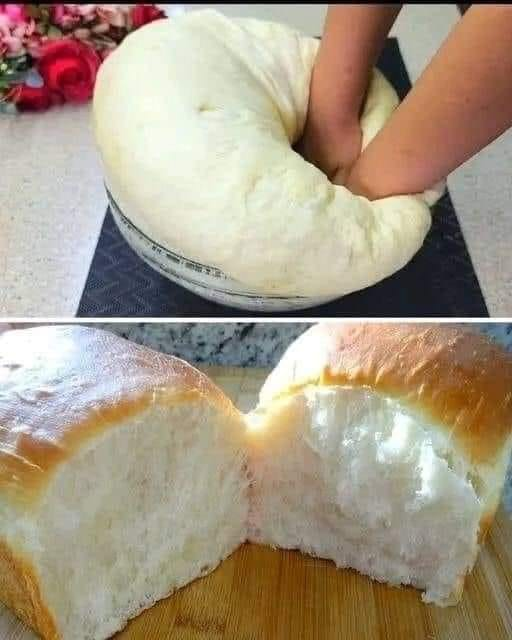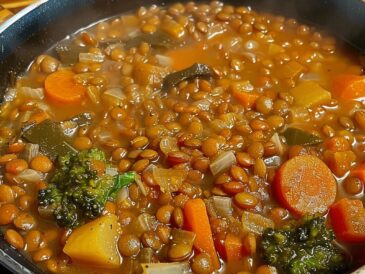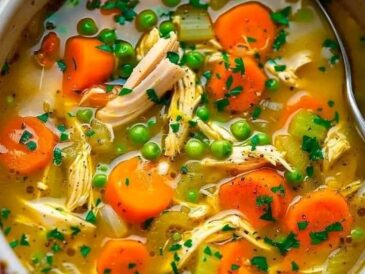Bread has been a staple in human diets for thousands of years, and it continues to hold a special place in our hearts and kitchens. Whether you’re a seasoned baker or a complete novice, the allure of freshly baked bread, with its heavenly aroma wafting through the air and its warm, soft texture, is irresistible. Today, I want to share my journey into the world of bread making, culminating in the creation of a fluffy bread recipe that will elevate your baking game. This recipe is not just about mixing flour, water, salt, and yeast; it’s about understanding the science and art behind each ingredient, the techniques that make a difference, and the sheer joy of pulling a perfectly risen loaf from the oven.
The Allure of Bread: Why We Love It
Before we dive into the recipe, let’s take a moment to appreciate the magic of bread. There’s something primal and comforting about baking – the tactile experience of kneading dough, the anticipation as it rises, and the satisfaction of slicing into a warm loaf. It brings people together, whether it’s for a family meal, a friendly gathering, or simply to enjoy a slice with some butter and jam. Bread transcends cultures and cuisines, from the crusty baguettes of France to the tender naan of India. It tells a story of tradition, sustenance, and creativity.
Understanding the Ingredients
To create the perfect fluffy bread, it’s essential to grasp the role of each ingredient:
- Flour: The backbone of any bread recipe. All-purpose flour is commonly used, but bread flour with a higher protein content can provide even more structure and chewiness.
- Water: Hydration is key to developing gluten, which gives bread its structure. The temperature of the water can also play a vital role—warm water can activate the yeast more quickly.
- Yeast: This little powerhouse is what makes your bread rise. Active dry yeast or instant yeast works well, but understanding how to activate it is crucial for fluffy results.
- Salt: Not only does it enhance flavor, but salt also controls yeast activity, ensuring a steady rise and proper fermentation.
- Sugar: Provides sweetness, feeds the yeast, and contributes to the golden crust through caramelization.
- Fat: Butter or oil adds richness and tenderness to the bread. It also impacts the shelf life of your loaf, keeping it soft for longer.
The Science of Rising
One of the most magnificent processes in baking is fermentation. When mixed with flour and water, yeast begins to eat the sugars and produce carbon dioxide and alcohol. This gas gets trapped in the gluten structure, causing the dough to rise. The longer you let the dough rise (within reason), the fluffier and more flavorful your bread will be.
Tips for Successful Rising:
- Warm Environment: Yeast thrives in warm conditions (between 75°F-85°F), so find a draft-free, cozy spot for your dough to rise.
- Kneading: Proper kneading develops gluten, which is essential for a fluffy texture. Aim for a smooth, elastic dough that springs back when poked.
- Punching Down: After the first rise, gently deflate the dough to redistribute the yeast and create a finer crumb structure.
Ingredients for the Fluffy Bread Recipe
To get started, gather the following ingredients:
- 4 cups all-purpose flour (or bread flour for extra chewiness)
- 2 ¼ teaspoons active dry yeast (1 packet)
- 1 ½ teaspoons salt
- 2 tablespoons sugar
- 1 ½ cups warm water (around 110°F)
- 3 tablespoons unsalted butter, melted (or canola oil)
The Fluffy Bread Recipe: A Step-by-Step Guide
Now that we’ve set the stage, let’s get to the heart of the matter—the recipe for this delightful fluffy bread!
Step 1: Activate the Yeast
- In a small bowl, combine the warm water, sugar, and yeast. Give it a gentle stir and let it sit for about 5-10 minutes until it becomes frothy. This means the yeast is alive and ready to work its magic.
Step 2: Mix the Dough
- In a large mixing bowl, combine the flour and salt. Once the yeast mixture is frothy, add it to the flour mixture along with the melted butter.
- Mix with a wooden spoon or your hands until a shaggy dough forms. You want to ensure that all the flour is incorporated.
Step 3: Knead the Dough
- Transfer the dough to a floured surface and knead for about 8-10 minutes. You can also use a stand mixer with a dough hook for this step. Knead until the dough is smooth and elastic.
Step 4: First Rise
- Place the kneaded dough in a greased bowl, cover it with a damp cloth or plastic wrap, and let it rise in a warm spot until it doubles in size, about 1-2 hours.
Step 5: Shape the Dough
- Once the dough has doubled, punch it down to deflate it and turn it out onto a lightly floured surface. Divide the dough into two equal portions for two loaves or leave it whole for one large loaf.
- Shape each portion into a loaf, tucking the edges under to create surface tension.
Step 6: Second Rise
- Place the shaped loaves into greased bread pans. Cover them again and let them rise until they’ve doubled, about 30-60 minutes.
Step 7: Preheat Oven and Bake
- Preheat your oven to 375°F (190°C). Once the loaves have risen, you can bake them for 25-30 minutes or until they are golden brown and sound hollow when tapped on the bottom.
Step 8: Cool and Enjoy
- Remove the loaves from the pans and let them cool on a wire rack. Resist the temptation to slice immediately; letting them cool fully will improve the texture.
Mastering the Art of Bread Making
As you embark on your bread-making journey with this fluffy bread recipe, keep in mind that practice is key. Each time you bake, you’ll learn something new—maybe your kitchen is warmer than intended, or perhaps the humidity affects the dough. Embrace the process! Baking bread is not solely about the end product; it’s about discovering the unique nuances that make every loaf special.
Pairing Your Fluffy Bread: Beyond Butter
Once you’ve successfully baked your fluffy bread, the possibilities are endless. Here are a few delightful ways to enjoy it:
- Sandwiches: Use your fluffy bread as the base for delicious sandwiches. Think classic turkey, avocado and cream cheese, or even a gourmet grilled cheese with your favorite cheeses.
- Toast: Lightly toast slices for breakfast. Top with avocado, poached eggs, or your favorite jams and spreads.
- Garlic Bread: Transform it into garlic bread by mixing softened butter with minced garlic and parsley, spreading it on slices and baking until toasty.
- Bread Pudding: Leftover bread? Use it for a comforting bread pudding with cinnamon, eggs, milk, and raisins or chocolate chips.
- French Toast: Slices of fluffy bread make for an indulgent French toast breakfast. Dip them in a mixture of eggs, milk, and vanilla before frying them in butter.
Troubleshooting Common Issues
Baking can be an adventure, and sometimes you might encounter a few bumps along the way. Here’s how to tackle some common issues:
- Dense Bread: This can happen due to insufficient kneading or rising time. Ensure you knead well and allow for proper fermentation.
- Crust Too Hard: If the crust is too tough, consider covering the bread with foil during baking or reducing the oven temperature slightly.
- Underbaked Center: If the outside is golden but the inside is raw, tent the loaf with foil and continue baking until fully done.
Conclusion: The Joy of Homemade Bread
Baking fluffy bread at home is a rewarding experience that yields not just a delicious product, but a sense of accomplishment and joy. From the moment you mix your ingredients to the moment you slice into that beautifully risen loaf, you’re participating in a process that has united families, friends, and cultures for generations.
So gather your ingredients, roll up your sleeves, and embark on this delicious adventure. With time, patience, and practice, you’ll be turning out fluffy loaves that not only fill your home with warmth but also bring smiles to the faces of those you share it with. Happy baking!




